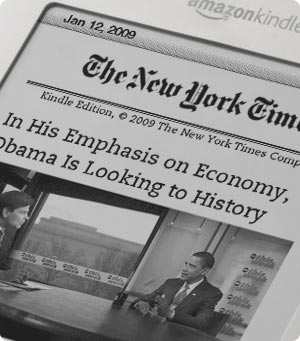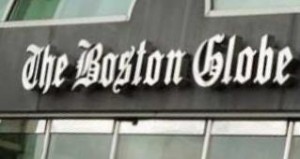 If the new owners of the San Diego Union-Tribune are planning to reinvent the news operation, they made a surprising choice in appointing Ed Moss (right), a 32-year newspaper veteran, to lead the charge. Moss was most recently president and CEO of the Los Angeles Newspaper Group and publisher of the Daily News of Los Angeles, as well as eight other titles. He’s is known for his ability to focus on local communities, so it could be that owner Platinum Equity is taking “hyper-local” to heart.
If the new owners of the San Diego Union-Tribune are planning to reinvent the news operation, they made a surprising choice in appointing Ed Moss (right), a 32-year newspaper veteran, to lead the charge. Moss was most recently president and CEO of the Los Angeles Newspaper Group and publisher of the Daily News of Los Angeles, as well as eight other titles. He’s is known for his ability to focus on local communities, so it could be that owner Platinum Equity is taking “hyper-local” to heart.
“I’m all about local, local, local – local news, local advertising,” Moss told the U-T. “That’s our niche. The way to differentiate ourselves is to be as local across the company as we can.”
Moss is an advertising guy. He’s been a publisher at papers in California, Ohio, Michigan and Louisiana and also held several advertising sales positions. He told the U-T that there is an unlocked opportunity in sales to local advertisers and that he would move aggressively to capture that business.
“I like to move very, very quickly,” he said. “And I like to build a culture that believes you have to move quickly.”The piece quotes past colleagues saying Moss is a nice guy, a visionary and a great leader. One of his prior bosses is David Black, who’s advising Platinum on the U-T’‘s makeover.
Lessons From the NY Newspaper Strike
 If the past is any clue to the future, then the New York newspaper strike of 1962-63 may offer a glimpse of what a nation without daily newspapers would look like. Slate’s Jack Shafer has a wonderful account of what a news-starved city did when the strike crippled all of its newspapers for nearly four months.
If the past is any clue to the future, then the New York newspaper strike of 1962-63 may offer a glimpse of what a nation without daily newspapers would look like. Slate’s Jack Shafer has a wonderful account of what a news-starved city did when the strike crippled all of its newspapers for nearly four months.
In short: it improvised. Non-unionized dailies in the boroughs saw circulation explode. The Philadelphia Inquirer imported thousands of daily copies. Radio and TV stations began reporting real news instead of just parroting what the dailies said. The Village Voice exploded out of anonymity to become the flagship of alternative weeklies. Tom Wolfe sought freelance income by writing an article for Esquire that would launch his book-writing career. Shafer cites example after example of what a population that had been accustomed to consuming 5.7 million newspapers a day did when it suddenly had none. They made do. And the world went on.
Which is what will happen when major metro dailies begin to close or scale back: Alternatives will rush in to fill the void. People will get their news elsewhere, and what they can’t get will be delivered by entrepreneurs who figure out a way to deliver it at a profit. Destruction is an ugly thing, but it’s usually a necessary precursor to reinvention. Shafer shrewdly notes, “The least reliable source for what the end of newspapers means is usually the newspaper men, who are too stuck in their roles to reimagine the world.” Once you shed assumptions, then possibilities open up.
Miscellany
With 39 more layoffs last week, the San Francisco Chronicle has brought its staff reduction total to 151 since March, or about where ownership said it had to be to achieve short-term equilibrium. The cost-cutting is unlikely to end there, though. According to the San Francisco Business Times, “the Chronicle will rely increasingly on freelancers and non-staff unpaid or poorly paid bloggers to fill the paper, in many cases using former staffers.” With so many laid-off journos on the street, what’s happening to the per-word rate you’ve been able to get? Comment below.
Online strategist Matt Maggard posts a lengthy proscription for change at the Los Angeles Times. He’s even redesigned the home page of the website for them. Maggard calls his essay “an open proposal. This includes a summary of value in the digital marketplace, how the Times can improve its product and how journalism should evolve its practices and business models to survive. I’m sending this around as an open proposal to help jump-start the discussion on what can be done to save the industry.” We didn’t find a lot of revolutionary thinking in the proposal, but its recommendations seem sound enough.
The state of Washington is shifting some of the burden of propping up a dying industry onto the taxpayers, approving a 40 percent cut in the state’s main business tax for publishers and printers. What’s next, rebates for the recording industry? The Seattle Times‘ 95-word news bite on the subject inspires more than 220 comments, indicating that the recession-plagued populace might feel just a wee bit strongly about this lobbyist-inspired giveback.
For newspaper publishers who whine that Google is an Internet parasite, Google spokesman Gabriel Stricker offers a brief tutorial in the workings of the robots.txt file, which enables publishers to easily block the company’s search spider whenever they want.
PriceWaterhouseCoopers has published a 56-page report called “Outlook for newspaper publishing in the digital age.” Our day job hasn’t permitted us to consume the entire document yet, but based upon this PWC summary, we probably won’t bother. The bottom line appears to be conventional wisdom that the print model is troubled, the future is in multiple media and the revenue mix has to shift away from a sole reliance on advertising. We suspect PriceWaterhouseCoopers will be more than happy to help publishers make the shift.
And Finally…
Ryan Pagelowis a reporter at the Lake County News-Sun in Waukegan, Ill. a contributor to Mad magazine (talk about a venerable print title) and a recipient of the Charles Schulz National College Cartoonist Award. He also pens a clever daily comic called Pressed, which he describes as “a behind-the-scenes look at a newsroom that’s trying to survive in an online world of tweeting blogospheres. It features a frazzled editor, reporters, a blogger and an assortment of politicians, weasels and snitches.” Check this out. It’s good.

 The newest port in a storm for the embattled newspaper industry is
The newest port in a storm for the embattled newspaper industry is 
 Does Lindsay Lohan
Does Lindsay Lohan  You could do a lot worse than spend the next 20 minutes reading Jason Pontin’s
You could do a lot worse than spend the next 20 minutes reading Jason Pontin’s  As negotiations with the Boston Globe‘s unions continued past a midnight deadline, The New York Times Co. filed notice with the federal government today of its
As negotiations with the Boston Globe‘s unions continued past a midnight deadline, The New York Times Co. filed notice with the federal government today of its  Billionaire investor Warren Buffett reads five newspapers every day, but he
Billionaire investor Warren Buffett reads five newspapers every day, but he  The New York Times Co.
The New York Times Co. 


